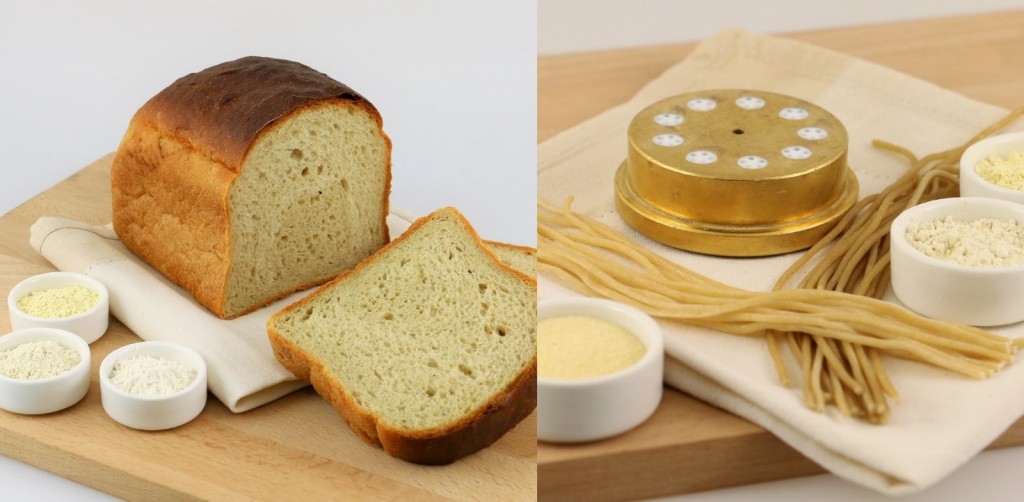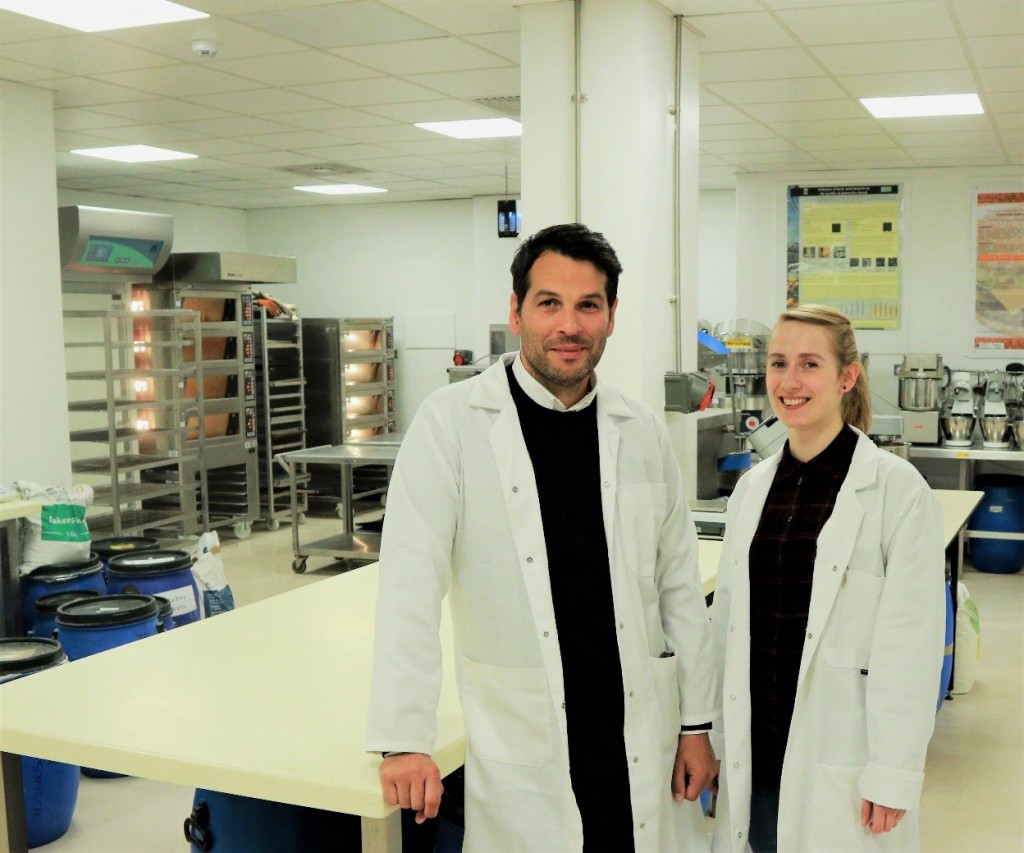
PROTEIN2FOOD partners have developed high-quality prototypes for protein-rich wheat bread and pasta. While most commercial options contain soy, whey or egg proteins, these new prototypes were produced using new plant-based protein ingredients developed during the project. These ingredients were processed from various pseudocereals, including quinoa, amaranth and buckwheat, all cultivated in Europe. When processing these ingredients, the researchers placed a strong emphasis on achieve high-quality proteins, while considering sustainability (i.e. lower energy inputs) and the functional properties of the ingredients. Functional properties are characteristics of food that have an important purpose but does not provide nutrition. An example of this is gluten in bread. It provides no nutrition but allows for the elasticity, a characteristic of the bread, in order to keep the bread’s structure. The prototypes containing a mix of wheat as well as legume and pseudocereal proteins were found to be particularly promising in fulfilling human nutrition requirements because of their well-balanced amino acid profile. These considerations are all important aspects of what makes the tastiest and most optimal high-quality and high-quantity protein bread and pasta products.
Initially, University College Cork performed a screening of these new protein ingredients and their performance in wheat-based bread and pasta formulations. Legume and pseudocereal proteins can be challenging to apply in foods, especially in bread formulations, and have often been reported to drastically decrease bread quality. However, PROTEIN2FOOD ingredients from lupin, faba bean and buckwheat were all found to be well suited to develop good quality wheat-based bread and pasta.
The insights
gained from the screening trials, recipes
and process optimisations, led to three prototypes for protein-rich bread and
one for protein-rich pasta. The combination of different new ingredients (lupin,
faba bean and buckwheat) proved to be advantageous, as they helped lower beany
and bitter off-flavours. An extensive analysis of the final products showed excellent
technological characteristics and sensory properties. Additionally, all
prototypes are suitable to be labelled ‘high in protein’ following the requirements for protein
contents as specified by European food legislation These products represent an
attractive alternative to conventional wheat bread and pasta or other protein-rich
choices currently on the market. They are entirely plant-based and offer an
increased protein content with high protein quality due to a well-balanced
amino acid profile. The next steps for these products are to further improve the protein-rich bread prototype by optimising the processes and recipes. Analysis of the technological quality, sensory attributes, product shelf life, nutritional profile (total nutrient composition, antioxidant and antinutritional compounds), as well as in vitro digestibility will also be carried out further. Interested in how close these prototypes are from full commercialisation? Head over to the Temperature Check on the Prototypes article, where the prototype’s Technology Readiness Levels are explained. Researchers from UCC: Dr. Emanuele Zannini (left), Andrea Hoehnel (right) have worked on the Protein-Rich Wheat Bread and Pasta. [1] European Commision (n.d). Nutrition Claims. [online]. Available from: https://ec.europa.eu/food/safety/labelling_nutrition/claims/nutrition_claims_en. [Accessed 23rd May 2019]. 
